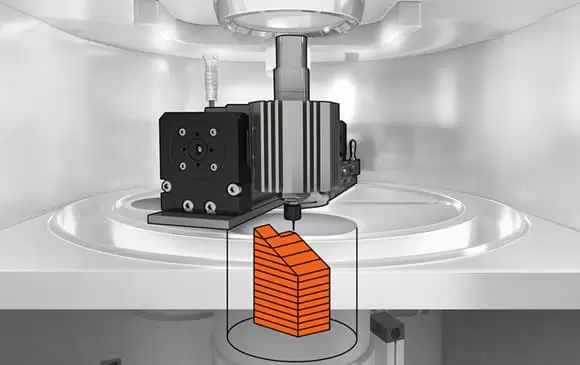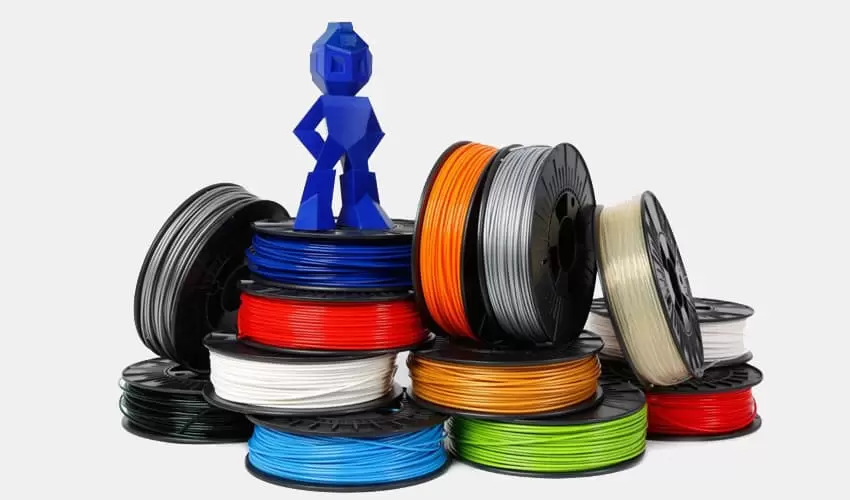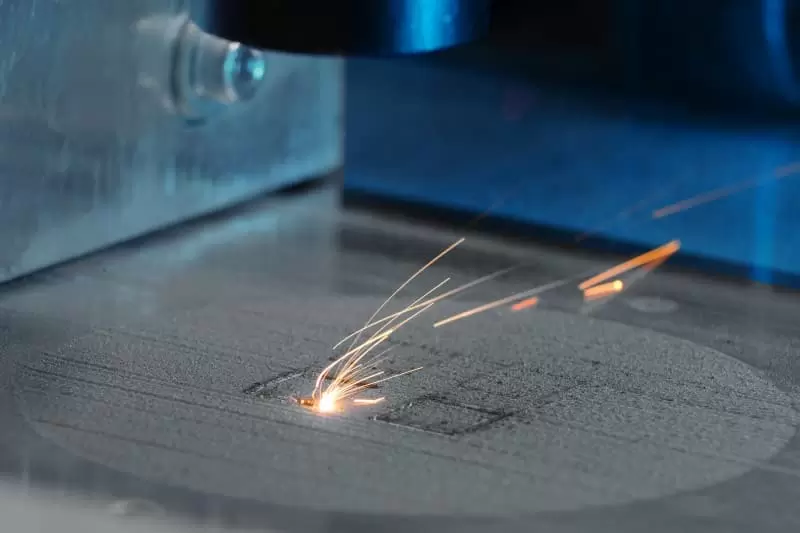I. Introduction
Prospect prototype model making is a crucial step in the design process, as it allows designers to test and refine their ideas before moving on to full-scale production. By creating a physical model of their concept, designers can evaluate its feasibility, functionality, aesthetics, and user experience. Prospect prototype model making also enables designers to communicate their vision more effectively to clients, stakeholders, and collaborators.
However, traditional methods of prospect prototype model making, such as sculpting, molding, or machining, can be time-consuming, costly, and wasteful. These methods often require specialized skills, tools, and materials, and produce a lot of waste in the form of excess material or discarded prototypes. Moreover, these methods have limitations in terms of the complexity and accuracy of the models they can produce.
This is where 3D printing technology comes in. 3D printing is a process that creates three-dimensional objects by depositing layers of material on top of each other, following a digital model. 3D printing has many advantages over traditional methods of prospect prototype model making, such as:
- Speed: 3D printing can produce prototypes much faster than conventional methods, as it does not require any molds or tools. 3D printing also allows for rapid iterations and modifications, as designers can easily make changes to the digital model and print a new version.
- Cost: 3D printing can reduce the cost of prospect prototype model making, as it uses less material and energy than conventional methods. 3D printing also eliminates the need for outsourcing or shipping prototypes, as designers can print them in-house or on-demand.
- Quality: 3D printing can create prototypes with higher quality and precision than conventional methods, as it can reproduce complex geometries and fine details that are otherwise impossible or difficult to achieve. 3D printing also allows for more customization and personalization, as designers can choose from a wide range of materials, colors, and finishes.
- Sustainability: 3D printing can improve the sustainability of prospect prototype model making, as it reduces the environmental impact of prototyping. 3D printing uses less material and produces less waste than conventional methods, as it only prints what is needed and can reuse or recycle the excess material. 3D printing also reduces the carbon footprint of prototyping, as it reduces the need for transportation and storage.
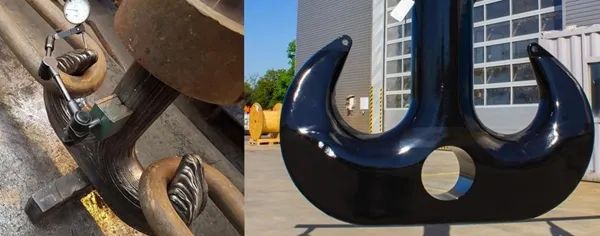
II. Basics of 3D Printing
A. History and Evolution of 3D Printing
3D printing dates back to the 1980s, when Charles Hull invented the first 3D printer that used a process called "stereolithography." This process involved using a laser to solidify a liquid resin layer by layer. Since then, 3D printing has advanced significantly, with new methods and materials emerging. Some of the most common 3D printing techniques today are Fused Deposition Modeling (FDM) and Stereolithography (SLA).
FDM is a technique that uses a heated nozzle to extrude a thermoplastic filament onto a build platform, forming a solid object layer by layer. FDM is widely used for prototyping and producing functional parts, as it is relatively inexpensive and versatile.
SLA is a technique that uses a laser to cure a liquid resin into a solid object layer by layer. SLA is known for its high accuracy and smooth surface finish, making it ideal for creating complex and detailed models.
B. Key Principles and Technologies Behind 3D Printing
The core principle behind 3D printing is additive manufacturing, which means creating an object by adding material rather than removing it. This allows for more freedom and flexibility in design, as well as reduced waste and cost.
There are many different technologies that enable 3D printing, each with its own advantages and disadvantages. Some of the most popular ones are:
- Selective Laser Sintering (SLS): A technique that uses a laser to fuse powdered materials such as nylon or metal into a solid object layer by layer. SLS can produce strong and durable parts with complex geometries and fine details.
- PolyJet: A technique that uses a jetting system to deposit droplets of liquid photopolymer onto a build platform, where they are cured by UV light. PolyJet can produce high-resolution parts with smooth surfaces and multiple colors and materials.
- Direct Metal Laser Sintering (DMLS): A technique that uses a laser to fuse metal powder into a solid object layer by layer. DMLS can produce metal parts with high strength and resistance to heat and corrosion.
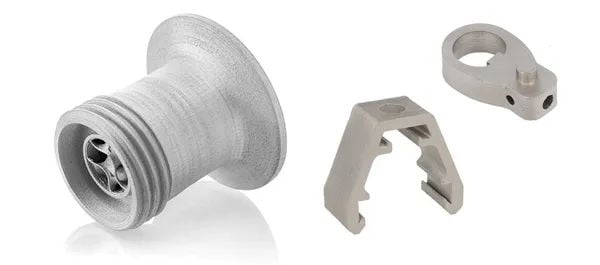
III. Advantages of Using 3D Printing for Prospect Prototype Model Making
- Cost savings and efficiency: 3D printing uses additive manufacturing, which means that it builds objects layer by layer, only using the material that is needed. This reduces material wastage and lowers the production costs. 3D printing also eliminates the need for expensive molds and tools, simplifying the production process and saving time and money.
- Faster production times: 3D printing can produce prototypes in a matter of hours or days, depending on the complexity and size of the model. This allows designers to test and validate their ideas faster, and to make changes and improvements more quickly. 3D printing also enables on-demand production, which means that prototypes can be made whenever and wherever they are needed, reducing delays and inventory costs.
- Ability to iterate and refine designs quickly: 3D printing gives designers the freedom to experiment and explore different design options, without being constrained by the limitations of traditional manufacturing methods. Designers can easily modify and enhance their prototypes, using feedback from customers, stakeholders, or their own intuition. 3D printing fosters a dynamic and responsive creative process, leading to better and more innovative products.
IV. Steps in Prospect Prototype Model Making with 3D Printing
A. Conceptualization and Design
The first step in 3D printing a prototype is to have a clear idea of what you want to create and why. You need to define the purpose, scope, and specifications of your prototype, as well as the target audience and market. Once you have a solid concept, you can start designing your 3D model using a software tool of your choice. There are many 3D modeling software options available, ranging from beginner-friendly to advanced and professional. Some examples are Tinkercad, SketchUp, Fusion 360, Blender, and SolidWorks. These tools allow you to create, modify, and export your 3D model as a printable file format, such as STL or OBJ.
B. Model Preparation and Optimization
The next step is to prepare your 3D model for printing. This involves checking and fixing any errors or issues that might affect the printability or quality of your prototype. For example, you need to make sure that your model is watertight, meaning that it has no holes or gaps that could cause leaks or deformations. You also need to optimize your model for the best printing performance and outcome. This includes choosing the optimal orientation, size, and resolution of your model, as well as adding support structures if needed. Support structures are additional material that helps support overhangs or bridges during the printing process. They can be removed after printing, but they might leave marks or scars on the surface of your prototype.
C. Printing Process and Settings
The third step is to print your prototype using a 3D printer of your choice. There are different types of 3D printers available, such as FDM (Fused Deposition Modeling), SLA (Stereolithography), SLS (Selective Laser Sintering), and DLP (Digital Light Processing). Each type has its own advantages and disadvantages, depending on the material, speed, accuracy, and cost of printing. You need to select the most suitable printer for your prototype based on your requirements and budget. You also need to select the most appropriate material for your prototype, such as PLA (Polylactic Acid), ABS (Acrylonitrile Butadiene Styrene), PETG (Polyethylene Terephthalate Glycol), Nylon, Resin, or Metal. Each material has its own properties, such as strength, flexibility, durability, and appearance. You need to choose the material that matches the function and aesthetics of your prototype. Finally, you need to adjust the settings of your printer to ensure the best quality of your prototype. These settings include temperature, speed, layer height, infill density, and retraction. These factors affect the smoothness, accuracy, strength, and weight of your prototype.
D. Post-Processing and Finishing Touches
The last step is to post-process and finish your prototype after printing. This involves removing any support structures or excess material from your model using tools such as pliers, cutters, or sandpaper. You also need to smooth and polish the surface of your model using techniques such as sanding, filing, priming, painting, or coating. These methods can help you improve the appearance and texture of your prototype. You can also add any additional features or details to your prototype using methods such as gluing, soldering, or engraving. These steps can help you enhance the functionality and realism of your prototype.
V. Case Studies: Successful Applications of 3D Printing in Prospect Prototype Model Making
A. Industrial Design Examples
One of the main benefits of 3D printing is that it allows designers to quickly and easily create prototypes of their ideas, without the need for expensive and time-consuming traditional manufacturing methods. This enables them to test and refine their designs, as well as showcase them to potential customers and investors. Some examples of industries that use 3D printing for prototyping are:
- Automotive: 3D printing can be used to create parts and components for cars, such as bumpers, dashboards, spoilers, and more. For instance, Ford has used 3D printing to prototype various parts for its vehicles, such as the Ford GT supercar and the F-150 truck. 3D printing can also be used to create customized accessories and features for cars, such as personalized steering wheels, seats, and logos.
- Consumer Electronics: 3D printing can be used to create prototypes of gadgets and devices, such as smartphones, tablets, laptops, cameras, and more. For example, Samsung has used 3D printing to prototype its Galaxy Fold smartphone, which features a foldable screen. 3D printing can also be used to create personalized cases and covers for devices, as well as functional prototypes of circuit boards and sensors.
B. Medical Device Development Case Studies
Another field that has been revolutionized by 3D printing is the medical field, where it can be used to create prototypes of surgical tools, implants, and other critical medical devices. 3D printing can help reduce the cost and time of developing these devices, as well as improve their quality and performance. Some examples of medical devices that use 3D printing are:
- Surgical Tools: 3D printing can be used to create customized surgical tools that fit the specific needs and preferences of surgeons and patients. For instance, Johnson & Johnson has used 3D printing to create surgical guides and instruments for orthopedic surgery, such as knee and hip replacements. 3D printing can also be used to create disposable surgical tools that reduce the risk of infection and contamination.
- Implants: 3D printing can be used to create implants that match the shape and size of the patient's anatomy, such as bones, joints, teeth, and organs. For example, Materialise has used 3D printing to create titanium implants for cranio-maxillofacial surgery, which are used to reconstruct the skull and face of patients with severe injuries or defects. 3D printing can also be used to create biocompatible implants that integrate with the patient's tissue, such as artificial blood vessels and skin grafts.
C. Architectural Modeling Applications
Finally, 3D printing can also be used to create models and prototypes for architectural design, which can help architects visualize and communicate their ideas more effectively. 3D printing can enable the creation of detailed scale models and prototypes for complex structures, such as buildings, bridges, stadiums, and monuments. Some examples of architectural projects that use 3D printing are:
- Buildings: 3D printing can be used to create models of buildings that showcase their design features, such as shape, color, texture, lighting, and landscaping. For instance, Foster + Partners has used 3D printing to create models of its projects, such as the Apple Park headquarters in California and the Bloomberg headquarters in London. 3D printing can also be used to create functional prototypes of buildings that test their structural integrity and performance under different conditions.
- Bridges: 3D printing can be used to create models of bridges that demonstrate their engineering principles, such as load-bearing capacity, stability, and aerodynamics. For example, MX3D has used 3D printing to create a steel bridge that spans a canal in Amsterdam. The bridge was printed using robotic arms that moved along the structure as it was being built. 3D printing can also be used to create functional prototypes of bridges that test their durability and safety under various loads and stresses.
VI. Challenges and Considerations in Prospect Prototype Model Making with 3D Printing
3D printing is a powerful technology that can be used to create realistic and functional prototypes for various purposes. However, 3D printing also comes with some challenges and considerations that need to be addressed in order to ensure the success of the prototype development process. In this blog post, we will explore three main aspects of 3D printing that are relevant for prospect prototype model making: quality control and accuracy, sustainability and material choices, and legal and intellectual property considerations.
Quality Control and Accuracy Concerns
One of the main challenges of 3D printing is ensuring the accuracy and quality of the printed prototypes. This is especially important for prospect prototype model making, as the prototypes need to meet the specifications and expectations of the potential customers or investors. Some of the factors that can affect the quality and accuracy of 3D-printed prototypes are:
- The design and calibration of the 3D printer
- The quality and compatibility of the 3D printing materials
- The settings and parameters of the 3D printing process
- The post-processing and finishing techniques
To address these challenges, it is essential to follow some strategies for quality control in 3D printing, such as:
- Choosing a reliable and suitable 3D printer for the prototype project
- Selecting high-quality and appropriate materials for the prototype design and function
- Testing and optimizing the 3D printing settings and parameters before printing
- Inspecting and measuring the printed prototypes for accuracy and quality
- Applying proper post-processing and finishing methods to enhance the appearance and performance of the prototypes
Sustainability and Material Choices
Another aspect of 3D printing that needs to be considered is the environmental impact of the technology. 3D printing can generate a lot of waste and emissions, depending on the type and amount of materials used, the energy consumption of the 3D printer, and the disposal of the printed prototypes. Therefore, it is important to adopt sustainable practices in 3D printing, such as:
- Choosing eco-friendly and biodegradable materials for 3D printing, such as PLA, wood, or bio-based plastics
- Reducing material waste by optimizing the design and layout of the prototypes, using support structures sparingly, and recycling or reusing leftover materials
- Saving energy by using energy-efficient 3D printers, turning off or unplugging the 3D printer when not in use, and using renewable energy sources if possible
- Disposing of the printed prototypes responsibly by recycling, composting, or donating them if they are no longer needed
Legal and Intellectual Property Considerations
The third aspect of 3D printing that is relevant for prospect prototype model making is the legal implications of using the technology. 3D printing can pose some challenges for protecting intellectual property rights, as it can enable easy copying and sharing of digital designs and physical objects. This can lead to potential legal disputes or violations involving patents, trademarks, copyrights, or trade secrets. To avoid these issues, it is important to respect intellectual property rights and navigate potential legal challenges in 3D printing.
3D printing is a valuable tool for creating realistic and functional prototypes for various purposes. However, 3D printing also requires careful consideration of some aspects that can affect the success of the prototype development process. By addressing the challenges and considerations related to quality control and accuracy, sustainability and material choices, and legal and intellectual property issues, prospect prototype model makers can ensure that their 3D-printed prototypes are accurate, sustainable, and legal.
VII. Future Outlook and Innovations in Prospect Prototype Model Making with 3D Printing
Emerging Trends and Technologies
One of the most exciting trends in 3D printing is the development of multi-material printing, which allows for the creation of objects with different properties and functionalities within a single print. For example, multi-material printing can enable the production of prototypes that have both rigid and flexible parts, or that combine electrical and mechanical components. This can greatly enhance the performance and functionality of the prototypes, as well as reduce the cost and time of production.
Another trend is the integration of 3D printing with other manufacturing processes, such as CNC machining, injection molding, or laser cutting. This is known as hybrid manufacturing, and it can offer the best of both worlds: the flexibility and customization of 3D printing, and the speed and accuracy of traditional methods. Hybrid manufacturing can also enable the creation of more complex and intricate prototypes that would be difficult or impossible to achieve with 3D printing alone.
Potential Impact on Industries and Design Processes
The continued evolution of 3D printing will have a significant impact on various industries and design processes, as it will enable more rapid and efficient prototyping, testing, and iteration. This will allow for more creativity and innovation, as well as faster feedback and improvement. Some of the industries that will benefit from 3D printing include:
- Aerospace: 3D printing can help create lighter and stronger parts for aircrafts and rockets, as well as reduce fuel consumption and emissions.
- Automotive: 3D printing can help produce customized and optimized parts for vehicles, such as engines, chassis, or interiors.
- Healthcare: 3D printing can help create personalized and biocompatible devices and implants, such as prosthetics, dental crowns, or organs.
- Education: 3D printing can help enhance learning and teaching by providing hands-on experience and interactive models for students and teachers.
- Art: 3D printing can help expand the possibilities and expressions of art by enabling the creation of unique and intricate sculptures, jewelry, or clothing.
3D printing is a technology that is constantly evolving and improving, offering new opportunities and challenges for prospect prototype model making. By exploring the latest trends and technologies in 3D printing, such as multi-material printing and hybrid manufacturing, we can anticipate how they will impact various industries and revolutionize design processes. By embracing 3D printing as a tool for innovation and efficiency, we can create better prototypes that will lead to better products and solutions.
VIII. Conclusion
In this guide, we have explored the amazing benefits of 3D printing for prospect prototype model making. We have seen how 3D printing can save time, money, and resources, while enabling more creativity, flexibility, and innovation. 3D printing is not only a tool, but a mindset that can transform the way we design and create.
As designers and industries, we have the opportunity to embrace the future of prospect prototype model making with 3D printing. Technology is constantly evolving, and so are the possibilities for our projects. 3D printing can help us to achieve our goals faster, better, and cheaper, while also expanding our horizons and challenging our limits.
We hope this guide has inspired you to try 3D printing for your next prospect prototype model. Whether you are a beginner or an expert, there is a 3D printer and a 3D printing service that suits your needs and budget. The future of design is in your hands. Are you ready to join the 3D printing revolution?


